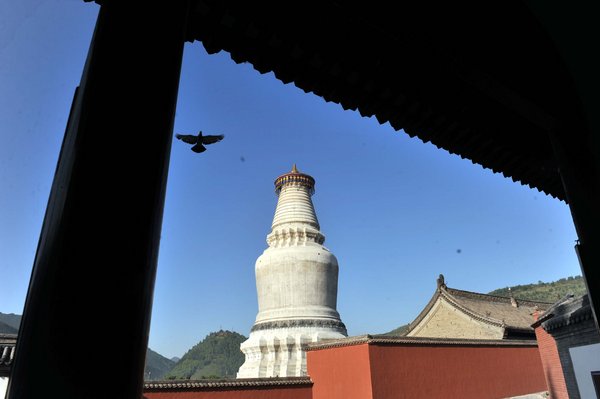
It had 6,300 people in 1986. The number increased to 7,700 in 2002 but later decreased to 6,400 in 2007 thanks to the government's efforts, Han said.
Since 2006, the government pulled down many inharmonious constructions to protect the "Buddhism atmosphere," Han said.
"The mountain has become more serene after the 'pulling down', which is good for religious practice," said Jamyang Molam, director of administration of the Pusading Lamasery.
Mt. Wutai receives more than 3 million tourists annually, and the UN designation is expected to push that number higher.
The mountain had applied to be both cultural and natural heritage but only approved to be cultural landscape, said Tang Wei, director of world heritage bureau, department of cultural heritage protection and archaeology, State Administration of Cultural Heritage.
The UNESCO said Mt. Wutai was not qualified to be a world natural landscape, Tang told Xinhua Via phone, giving no more details about the rejection.
Another famed mountain in China, Mt. Songshan, also applied to become a world heritage site, but the result has not been released yet. The Shaolin Temple, which is the birthplace of Shaolin kungfu, is located on this mountain in central China's Henan Province.
As of 2008, China had listed 38 world heritage sites, including 27 cultural heritage sites, seven natural heritage sites and four cultural and natural heritage sites.